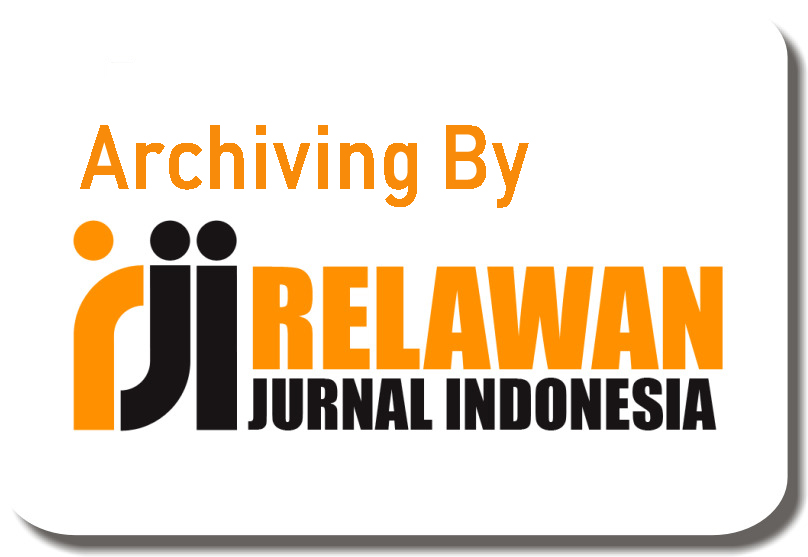The Effectiveness of Kaili Folktales to Improve Students Reading Comprehension at SMPN 19 Palu
Abstract
This study investigates the effectiveness of Kaili folktales in enhancing students’ reading comprehension at SMPN 19 Palu. The research was motivated by students' difficulties in understanding narrative texts, reflecting low reading comprehension levels. A quasi-experimental design was employed, involving 43 eighth-grade students divided into an experimental group (n = 23) and a control group (n = 20). The experimental group was taught using Kaili folktales, while the control group used general folktales. Data were collected through pre-tests and post-tests consisting of multiple-choice and essay questions. The results revealed that the experimental group achieved a higher average post-test score (71.04) compared to the control group (61.35). A Mann-Whitney test using SPSS 26 yielded a Sig. (2-tailed) value of 0.001, indicating a significant difference between the groups. The findings suggest that incorporating Kaili folktales into English instruction effectively enhances students’ reading comprehension.
Keywords
Full Text:
PDFReferences
Astiantih, S., Ode Muh Idrus Hamid, L. B., & Nurul Pratiwi Sofyan, W. (2022). Improving Reading comprehension by using experience text relationship (ETR). ELS Journal on Interdisciplinary Studies in Humanities, 5(2), 2022.
Daud, St.Nuraysia , Abdul, N. B. use of enrekang folktales to improve the students, & Burhanuddin, W. (2021). The use of enrekang folktales to improve the students. English Language Teaching Methodology, 1(2), 110–114.
Field, A. (2013). Discovering statistics using IBM SPSS statistics. In Statistics (Vol. 58).
Hilaikal, F., & Ayu, M. (2023). The implementation of SQ3R in helping students’ assessment in reading class at SMAN 1 Adiluwih. Journal of English Language Teaching and Learning (JELTL), 4(1), 53–57. http://jim.teknokrat.ac.id/index.php/english-language-teaching/index
Ida Bagus Nyoman, M., & Dewa Gede Agung Gana, K. (2018). Folktales as meaningful cultural and linguistic resources to improve students’ reading skills. Lingua Scientia, 25(2), 83. https://doi.org/10.23887/ls.v25i2.18827
Johnson, A., & Elliott, S. (2020). Culturally Relevant Pedagogy: A Model To Guide Cultural Transformation in STEM Departments. Journal of Microbiology & Biology Education, 21(1). https://doi.org/10.1128/jmbe.v21i1.2097
Laras, D., Jamiluddin, J., Lebagi, D., & Mukrim, M. (2024). Increasing reading comprehension through the use of Kaili folktales. Jurnal Onoma: Pendidikan, Bahasa, Dan Sastra, 10(1), 409–415. https://doi.org/10.30605/onoma.v10i1.3236
Markus Birahi1 , S. N. Aulele2 , A. Z. Wattimena3* N. Lewaherilla4, S. J. L. (2016). Analysis of The Effect Of Contextual Teaching and Learning (CTL) Learning Models On Students’ Learning Processes Using The Mann- Withney and Wald-Wolfowitz Tests Markus. 01(01), 1–23.
Mertosono, S. R., Erniwati, E., Hastini, H., & Arid, M. (2020). Using POSSE strategy in teaching reading comprehension. Ethical Lingua: Journal of Language Teaching and Literature, 7(2), 321–328. https://doi.org/10.30605/25409190.214
Ningsih, I. H., Winarni, R., & Roemintoyo, R. (2019). The Importance Of Early Reading Learning In The Face Of 21st Century Education. AL-ASASIYYA: Journal Of Basic Education, 3(2), 196. https://doi.org/10.24269/ajbe.v3i2.1879
Nurjanah, L, R., & Putri, R, S. (2020). The effect of literal comprehension on the higher levels of comprehension in reading skill: a Longitudinal case study. English Language & Literature International Conference, 5(1), 473.
Qalby, N. (2014). Improving the students’reading comprehension through explicit teaching strategy. Exposure : Jurnal Pendidikan Bahasa Dan Sastra Inggris, 3(2), 155. https://doi.org/10.26618/ejpbi.v3i2.834
Rizki Perdiana, D. (2022). The use of narrative text on students’ reading comprehension ability. International Journal of English Linguistics, Literature, and Education (IJELLE), 4(2), 2686–5106. http://journal.univetbantara.ac.id/index.php/ijelle/index
Rombot, O., Boeriswati, E., & Suparman, M. A. (2020). Improving Reading comprehension skills of international elementary school students through blended learning. Al Ibtida: Jurnal Pendidikan Guru MI, 7(1), 56. https://doi.org/10.24235/al.ibtida.snj.v7i1.6045
Samiei, F., & Ebadi, S. (2021). Exploring EFL learners’ inferential reading comprehension skills through a flipped classroom. Research and Practice in Technology Enhanced Learning, 16(1). https://doi.org/10.1186/s41039-021-00157-9
Siregar, W. S., & Harida, E. S. (2021). Students’ Reading Comprehension in Descriptive Text. English Education : English Journal for Teaching and Learning, 9(01), 77–86. https://doi.org/10.24952/ee.v9i01.4104
Smith, R., Snow, P., Serry, T., & Hammond, L. (2021). The Role of Background Knowledge in Reading Comprehension: A Critical Review. Reading Psychology, 42(3), 214–240. https://doi.org/10.1080/02702711.2021.1888348
Sugiyono. (2020). Metode Penelitian Kuantitatif, Kualitatif, dan Kombinasi (Mixed Methods). 1–781.
Sugiyono, D. (2010). Metode penelitian kuantitatif kualitatif dan R&D. In Penerbit Alfabeta.
Sulistyo, Ie., Orientation, T. part can be joined in, Begin., part. I. contains the narrative, Place, E. tells about the time and, & Storied.rwan, of the event being. (2013). An analysis of generic structure of narrative text. ETERNAL (English Teaching Journal), 4(2), 169–181.
Yulianah. (2020). The effectiveness of listen read discuss (LRD) strategy for students reading comprehension. Jurnal Ilmiah Bahasa Dan Sastra, 7, 63–72.
Yusismi, & Jufri. (2017). Journal of English Language Teaching. Teaching Reading comprehension of narrative text by using “Story Re-enactment” techmique at senior high school. Journal of English Language Teaching, 6(1). http://ejournal.unp.ac.id/index.php/jelt
DOI: https://doi.org/10.31004/jele.v10i4.1170
Refbacks
- There are currently no refbacks.
Copyright (c) 2025 Maryana Majeed, Mukrim, Desrin Lebagi, Konder Manurung

This work is licensed under a Creative Commons Attribution-ShareAlike 4.0 International License.



